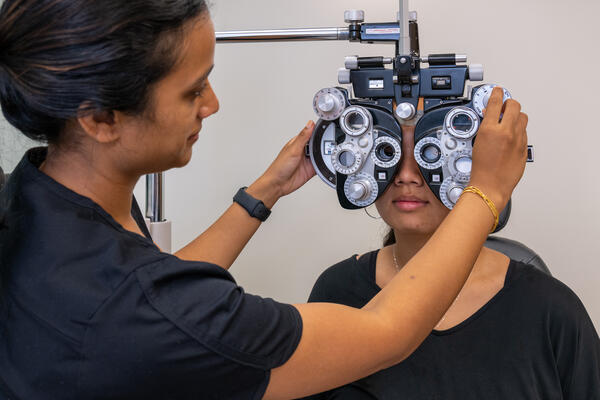Discover Andalusia's Ideal Cardiologist Clinics and Services
Discover Andalusia's Ideal Cardiologist Clinics and Services
Blog Article
The Benefits And Drawbacks of Various Refractive Surgeries for Improved Eyecare

LASIK Surgical Treatment
LASIK surgical procedure is a frequently performed refractive procedure that intends to correct vision issues such as nearsightedness, farsightedness, and astigmatism. This medical strategy has actually gained popularity because of its efficiency in offering clients with clearer vision and minimizing their dependency on glasses or get in touch with lenses. During the procedure, a thin flap is created on the cornea, and a laser is used to reshape the underlying cells, dealing with the refractive mistake. The flap is after that rearranged, enabling fast recovery and minimal discomfort for the individual.
One of the key benefits of LASIK surgical treatment is the fast enhancement in vision experienced by many people. It is crucial for people thinking about LASIK surgery to undertake a comprehensive assessment by an eye treatment expert to identify if they are appropriate prospects for the treatment.
PRK Treatment
The PRK treatment, also recognized as Photorefractive Keratectomy, is a kind of refractive surgery that intends to correct vision problems comparable to LASIK surgical procedure. Unlike LASIK, which includes producing a flap in the cornea, PRK functions on the surface layer of the cornea.
One of the benefits of PRK over LASIK is that it gets rid of the risk of flap-related problems given that no flap is created during the surgical treatment. This can be useful for people with thin corneas or those involved in contact sports where eye injury is an opportunity. Nonetheless, the recovery time for PRK is normally longer contrasted to LASIK, as the outer layer of the cornea requires time to regenerate after the treatment. Despite the longer recovery period, PRK can be a suitable option for individuals seeking vision improvement surgical treatment.
SMILE Surgery
An advanced refractive surgical treatment strategy getting popularity in the area of ophthalmology is SMILE Surgical treatment. Tiny Incision Lenticule Removal (SMILE) is a minimally intrusive procedure that corrects vision by reshaping the cornea making use of a femtosecond laser. Unlike conventional LASIK surgical treatment, SMILE Surgical treatment entails creating a small incision in the cornea to extract a lenticule, which results in less disruption to the corneal framework and possibly faster recuperation times.
One of the key advantages of SMILE Surgery is its capability to treat nearsightedness (nearsightedness) and astigmatism with high precision, bring about outstanding aesthetic outcomes for people. The minimally invasive nature of the procedure likewise lowers the risk of complications such as dry eye disorder, making it a beneficial choice for people seeking refractive surgical procedure.

LASEK Strategy
Having discovered the advantages and considerations of SMILE Surgical treatment, another significant refractive surgical treatment strategy worth examining is the LASEK Technique. LASEK, which her comment is here represents Laser-Assisted Subepithelial Keratectomy, is a form of laser eye surgical procedure that aims to fix refractive errors such as myopia (nearsightedness), hyperopia (farsightedness), and astigmatism.
Unlike LASIK, LASEK does not entail developing a corneal flap. Instead, throughout a LASEK treatment, the specialist utilizes a watered down alcohol service to loosen up the slim outer layer of the cornea, understood as the epithelium.
One of the main advantages of LASEK is that it can be ideal for people with slim corneas that may not be great candidates for LASIK. Furthermore, LASEK commonly results in minimal post-operative discomfort and a quicker healing time contrasted to PRK. Nonetheless, the visual healing process with LASEK might be a little longer than with LASIK.
Implantable Contact Lenses
Implantable Call Lenses use a long-lasting vision improvement remedy for individuals seeking an alternative to conventional call lenses or glasses. These lenses, likewise called phakic intraocular lenses, are operatively put into the eye to deal with refractive mistakes such as nearsightedness (nearsightedness), hyperopia (farsightedness), and astigmatism. andalusia pediatrics. Unlike conventional call lenses that sit on the surface of the eye, implantable call lenses function within the eye itself, offering clear vision without the requirement for daily upkeep or removal
Among the key benefits of implantable contact lenses is their permanence. When put, they can remain in the eye forever, using constant and steady vision improvement. Additionally, these lenses can be an outstanding option for individuals that are bad candidates for laser eye surgical treatment or who prefer a relatively easy to fix vision modification procedure.
However, implantable call lenses do bring some dangers, consisting of the potential for cataracts or increased eye stress. It is important for individuals considering this alternative to talk to an eye care professional to establish if implantable call lenses are the best selection for their details needs and eye health and wellness.
Conclusion
Finally, each sort of refractive surgery has its very own advantages and negative aspects. LASIK surgical treatment is popular for its fast recovery time, while PRK treatment may be ideal for individuals with thin corneas. SMILE surgical treatment offers very little pain throughout the treatment, yet LASEK method may have a longer read the full info here recovery process. Implantable get in touch with lenses provide an option for those that are not appropriate candidates for standard surgeries. People must speak with their eye care provider to figure out the very best alternative for their specific needs.

Overall, SMILE Surgical procedure presents a promising choice for individuals looking to improve their vision via refractive surgery.
Report this page